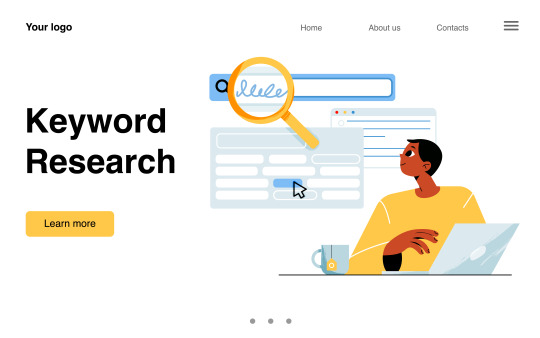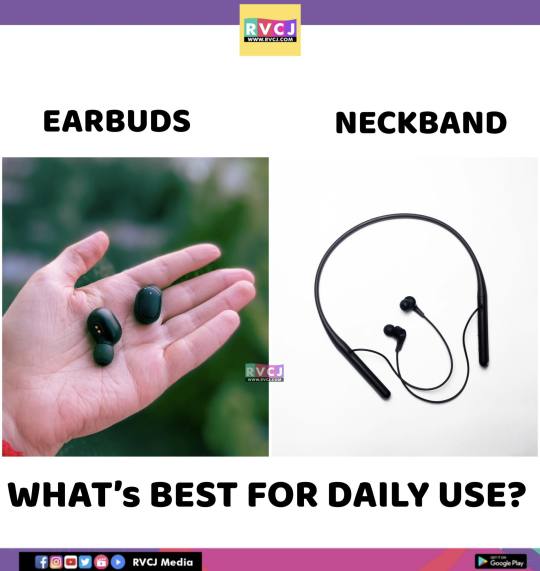#keywords optimization
Explore tagged Tumblr posts
Text
How to Do Keyword Research For Your Blog? 2023
Introduction
In the ever-evolving world of online content creation, having a well-optimized blog is crucial for attracting organic traffic and reaching a wider audience. One of the key aspects of optimizing your blog for search engines is conducting effective keyword research.
By identifying the right keywords to target, you can improve your chances of ranking higher in search engine results pages (SERPs). In this article, we will delve into the process of keyword research for your blog and provide you with valuable insights and strategies to help you create content that resonates with your target audience.
If you are Looking For the Best Advertising Agency In Delhi to drive your business activities online and to overcome your competitors fast, then you should hire an Advertising Agency for your business who has extensive experience, inventive strategies, and a remarkable history of delivering outstanding outcomes. Here is Digital Triber which is one of the leading Advertising Agency In Delhi with affordable cost. They have a team of highly skilled professionals and with the guidance of professionals along with effective SEO strategies you can achieve your business goal in a short period of time but in an effective way I highly recommend considering Digital Triber as the Best Advertising Agency In Delhi .
Understanding Keyword Research
Keyword research is the process of identifying the words and phrases that users enter into search engines when looking for information, products, or services. By targeting these keywords in your blog content, you increase your visibility in search engine results and attract relevant traffic.
However, it's important to note that keyword research is not just about finding the most popular or high-traffic keywords. It's about striking the right balance between search volume, competition, and relevance to your blog's niche.

Step 1: Define Your Blog's Niche
Before diving into keyword research, it's essential to have a clear understanding of your blog's niche. Defining your niche helps you identify the specific topics and themes that resonate with your target audience. By focusing on a specific niche, you can establish yourself as an authority and attract a loyal readership.
Step 2: Brainstorm Relevant Topics
Once you have defined your blog's niche, it's time to brainstorm relevant topics. Think about the main categories or themes that align with your niche and jot them down. For example, if you have a blog about fitness, your topics could include "strength training," "cardio workouts," "nutrition tips," and so on. These topics will serve as a foundation for your keyword research. If you have an wordpress site you should know about these Top 7 Best Free WordPress Plugins in 2023.
Step 3: Use Keyword Research Tools
To find the most suitable keywords for your blog, you need to leverage keyword research tools. These tools provide valuable insights into search volume, competition, and related keywords. Some popular keyword research tools include:
Google Keyword Planner:
Semrush
Ahrefs
Step 4: Analyze Keyword Metrics
Once you have identified a list of potential keywords using the tools mentioned above, it's time to analyze their metrics. Look for keywords with a balance of decent search volume and manageable competition. Avoid targeting highly competitive keywords, especially if your blog is new or lacks a strong domain authority.
Step 5: Consider Long-Tail Keywords
In addition to targeting broader keywords, it's important to consider long-tail keywords. Long-tail keywords are more specific and often have lower search volume but higher conversion rates. They can help you attract a more targeted audience and improve the quality of your blog traffic. For example, instead of targeting the keyword "fitness tips," you could focus on "beginner strength training tips for women."
Step 6: Analyze Competitor Keywords
Analyzing competitor keywords can provide valuable insights into what works in your niche. Identify your main competitors and analyze the keywords they are targeting. Look for gaps and opportunities where you can differentiate your content.
This analysis can help you refine your keyword list and come up with unique content ideas. If you have online business make it visible across the globe with the Advertising Agency In Delhi.

Step 7: Monitor and Refine
Keyword research is an ongoing process. It's crucial to monitor the performance of your chosen keywords and make adjustments as needed. Keep an eye on your blog's analytics to see which keywords are driving the most traffic and engagement. Additionally, stay updated with the latest trends and changes in your niche to refine your keyword strategy accordingly. Do you know the Difference Between Black Hat and White Hat SEO?
Conclusion
Effective keyword research is a fundamental aspect of optimizing your blog for search engines and attracting organic traffic. By following the steps outlined in this article, you can conduct comprehensive keyword research and create content that resonates with your target audience. Remember, it's not just about ranking high in Google but providing value to your readers. By delivering high-quality content consistently, you can establish your blog as an authority and drive sustained organic traffic.
#Best Advertising Agency In Delhi#digital illustration#digital marketing#keyword strategy#keywords optimization
1 note
·
View note
Note
What are common keywords any game design resume should include?
It depends on the kind of designer position you're aiming for. We want to see key words for common tasks that those kind of designers have done. Here are some examples:

Common
Experience, craft, create, live, season, update, content, schedule, create, design, team, player, UX.
Level Design
Layout, place, trigger, volume, spawn, point, reward, treasure, quest, lighting, light, dark, texture, object, obstacle, blocking, whitebox, direct, draw, through, inviting, space, place, multiplayer, competitive, cooperative, co-op, deathmatch, capture the flag, ctf, domination, asymmetric, symmetric.
Quest Design
Text, reward, spawn, balance, level, pace, pacing, word, budget, localization, loc, narrative, item, itemization, dialogue, branch, spawn, difficulty, player, multiplayer, encounter, placement, place, trigger, chain, pre req, pre-requisite, condition, scripting, faction, seasonal, event.
Cinematic Design
Narrative, camera, character, blocking, screen, position, ease-in, ease-out, pan, cut, smash, storyboard, frame, framing, beat, cue, pacing, feel, shot, zoom, sfx, vfx, mark, contextual, conditional, quick time, event, timing.
System Design
Balance, numbers, formula, spreadsheet, excel, curve, quadratic, linear, logarithmic, growth, plot, level, power, over, under, even, normal, distribution, player, total, analysis, scale, scaling, script, scripting, math.

If you're at all familiar with the regular kind of duties and tasks that any of these kind of designers do on a regular basis, you'll immediately start to see how these words fit into describing what we do day in and day out. These are going to be the kind of words we see used to describe the sort of experience we expect to see on a resume/CV from someone who has done this kind of work before. We won't expect all of them in every resume, but we expect a good many of these words on the resume/CV of a reasonable candidate.
[Join us on Discord] and/or [Support us on Patreon]
Got a burning question you want answered?
Short questions: Ask a Game Dev on Twitter
Short questions: Ask a Game Dev on BlueSky
Long questions: Ask a Game Dev on Tumblr
Frequent Questions: The FAQ
28 notes
·
View notes
Text
Understanding 〜てばかりいる in the Japanese Language
Japanese is a language rich with nuance and subtle grammatical expressions. One such structure is 〜てばかりいる, a phrase used to indicate that someone is repeatedly or exclusively engaging in a specific action. In this post, we will explore the formation, meaning, nuances, and advanced usage of this structure. Additionally, we include example sentences, interactive exercises, and practice questions to…
#advanced Japanese expressions#advanced Japanese language learning#〜てばかりいる usage#daily prompt#effective Japanese learning#English#high-volume Japanese keywords#japan#Japanese#Japanese blog optimization#Japanese conversation tips#Japanese cultural insights#Japanese Culture#Japanese expression examples#Japanese grammar 〜てばかりいる#Japanese grammar exercises#Japanese grammar for beginners#Japanese grammar lesson#Japanese grammar practice#Japanese habit expressions#Japanese language#Japanese language blog#Japanese language learning#japanese language proficiency test#Japanese language SEO#Japanese language structure#Japanese language tutorial#Japanese linguistic nuances#Japanese repetitive behavior#Japanese study tips
6 notes
·
View notes
Text
Stay Ahead of Seasonal SEO Trends with Pat’s Marketing in Toronto 🚀

Seasonal shifts bring unique opportunities for E-Commerce businesses, and Pat's Marketing is here to help you make the most of Seasonal SEO trends. As your trusted Toronto SEO expert, we’ll guide you through optimizing your content, conducting seasonal keyword research, and updating your product listings for the highest impact. Plan ahead, stay agile, and watch your sales soar this season! Contact us today to get started on optimizing your seasonal strategy!
#Seasonal SEO trends#Pat's Marketing#Toronto SEO expert#digital marketing#eCommerce SEO#seasonal keyword research#mobile optimization#sales growth#traffic generation#seo company toronto#seo services#web design#web design company#seo consultant#seo company#best seo company toronto#ppc toronto#ppc management services
2 notes
·
View notes
Text
I will make 50 unique article submission contextual backlinks

Article Submission refers to an off-page SEO technique in which you write an article and publish it on the third-party website. It is a method by which you write articles that are related to your business and add them to the famous contents submission directories.
Get your website published on High DA Site permanently. Articles are effective for improving your google ranking as it increase great authority backlinks.
With my service, you can expect:
Proper formatting and optimization.
Increased online visibility and traffic.
Detailed report of all work.
All links will be done manually. No tool will be used for it.
Permanent link building.
Contextual backlinks.
High DA and PA sites.
Unlimited Keywords and URLs.
100% Approval Sites.
On Time delivery.
Don't miss out on the opportunity to increase your online visibility and drive more traffic to your website.
Order my gig now and let's get started on boosting your online presence!
Order Now > WhatsApp +8801730604878
#article#article submission#seo services#seo backlinks#seo google#seotimerank#seo time rank#backlinks#backlink seo#backlink#link building#ranking#rank website#website ranking#marketing agency#smm services#keyword research#search engine optimization#google ads#usa traffic#seotimerank review#seotimerank smm#seotimerank market#seotimerank app#seotimerank agency#seo agency#digital marketing#online marketing#socialmediamarketing#seo agency seotimerank
14 notes
·
View notes
Text
How to write a high-ranking travel blog?
I just realized something—I love writing about travel. Maybe it's because I don’t get to travel as much as I want, but deep-diving into destinations, cultures, and hidden gems? That’s my jam.
Lazy writers just throw in words like exquisite dining and culinary delights (ugh). I dig deeper—Reddit, Quora, local blogs—because good travel writing feels like a journey, not just a list of fancy adjectives.
Oh, and if you're writing about a luxury destination? Find what makes it stand out, not just how it looks. Add your voice, your style, and relevant keywords to make it rank better.
#seo#content writing#search engine optimization#seo tips#blogging#blog post#travel#blog#writing#keyword research
3 notes
·
View notes
Text
Why 2025 is the year to prioritize Answer Engine Optimization. Stay ahead with expert insights about AEO and unlock growth opportunities.
#Answer Engine Optimization#AEO#AEO Company#AEO Services#What Is AEO#SEO#Voice Search Optimization#Google Keyword Planner#AI#Featured Snippets#What Is Answer Engine Optimization?#Site It Now#United States#USA#US Business Owners#Businesses In The United States#SEO vs AEO: What's The Difference?#Why 2025 Is The Year For AEO#How To Incorporate AEO?#Domain Authority#Search Engine Optimization#SEO Services#SEO Company#SEO Agency#Best SEO Company
2 notes
·
View notes
Note
Someone that's brave enough please spam the q hair reveal clip from the karlnapitry meet up on twt.
😶
10 notes
·
View notes
Text
The Relevance of Conducting Keyword Research in Digital Marketing
In a world dominated by technology where businesses require visibility to succeed. The only way to cut through the noise of millions of websites is to know what your audience wants, and then create content that addresses that need. This is where conducting keyword research comes in- it is a critical building block that goes into constructing a good digital marketing strategy.
Understanding Keyword Research :
In most cases, users do not type in full sentences into search engines- instead, they search for keywords and phrases. Keywords are what connect the questions asked by the user, to a piece of content prepared to answer the query. Identifying keywords allows businesses to create content that users are looking for, increasing their chances of ranking higher in search results, and making more sales.

Why Is Keyword Research Important?
A Better Return On Investment (ROI): Returning from targeted ads is higher than any other form or investing in advertising channels, for example: Pay per click adverts.
Increased Visibility: It is extremely hard to get noticed as a new website, and investing in keywords will allow you to boost your website’s organic traffic.
Understanding Audience Intent: Good keyword research helps you understand what your target audience is looking for and how they phrase their queries. You can, therefore, create content that directly answers their needs, thus building trust and fostering engagement.
3. Competitive Advantage: Analyze the keywords your competitors are targeting, find gaps in their strategy, and identify opportunities to differentiate your content. This way, you are ahead in a crowded marketplace.
4. Cost-Efficient Advertising: Keyword research for paid campaigns is very important. For example, Google Ads has to be able to select appropriate cost-effective, high-performing keywords. So, targeting the right keywords really minimizes waste and maximizes ROI.
5. Content Strategy Development: It acts as a roadmap for content strategy. By creating blog posts, videos, and other such assets that actually resonate with the audience while satisfying the search engines, it provides a well-researched list of keywords.
Effective Keyword Research Tips
Use Tools: Utilize Google Keyword Planner, SEMrush, or Ahrefs to uncover the volume, competition, and trend of your keyword.
Long Tail Keywords: Be more specific as they tend to have less competition and more chances of conversion
Search Intent: Identify if it is an information intent, a navigational intent, or transactional intent to use it appropriately for your content.
Keep fresh: trends in searches change, and your keyword approach should be reviewed regularly.
Keyword research is far from a technical task; it's a strategic initiative that bestows business the power to connect with audiences more effectively. The time and resources you invest in understanding the language of your customers set you up for long-term digital marketing success. Whether you are optimizing for organic search or planning a PPC campaign, keyword research is the compass guiding your efforts toward measurable results.
#Digital Marketing#SEO Strategy#Search Engine Optimization#Audience Intent#Content Marketing#PPC Campaigns#Long-Tail Keywords#Marketing Tips#Competitive Analysis#Online Advertising#Marketing Strategy#Website Traffic#Organic Search#Digital Marketing Trends#Keyword research#keyword research tools
2 notes
·
View notes
Text
How to Create Designs That Work for Your Print-on-Demand Business
Running a print-on-demand business is both exciting and challenging. Whether you're selling on platforms like Redbubble or managing your own store, creating designs that resonate with your audience is the key to success. But how do you craft designs that not only look great but also sell? In this blog post, I’ll guide you through the process of creating designs that work for your print-on-demand business, with tips and tricks tailored to help you stand out in a competitive market. Let’s dive in!
Why Design Matters in Print-on-Demand
In the world of print-on-demand, your designs are your product. Unlike traditional retail, you’re not selling physical inventory—you’re selling ideas. Your customers are drawn to your creativity, so your designs need to:
- Capture attention: Bold, unique designs stand out in search results.
- Resonate with your audience: People buy designs that align with their personality, values, or interests.
- Fit the product: A design that looks great on a t-shirt might not work on a mug or phone case.
Understanding these principles is the first step to creating designs that work for your business.
Step 1: Know Your Niche
The most successful print-on-demand businesses are niche-focused. Instead of trying to appeal to everyone, target a specific audience.
- Research your audience: Who are they? What are their interests, hobbies, or values?
- Find trending niches: Use tools like Google Trends or Redbubble’s trending searches to discover what’s popular.
- Create for your passion: If you’re passionate about your niche, it will show in your designs.
For example, if your niche is cozy, minimalist designs, you could create products that appeal to people who love hygge-inspired aesthetics.
Step 2: Brainstorm Unique Design Ideas
Once you’ve identified your niche, it’s time to brainstorm ideas. Here’s how to get started:
- Use keyword research: Tools like Redbubble’s search bar or Pinterest Trends can help you find popular themes.
- Look for inspiration: Check out competitors, social media, or even nature for fresh ideas.
- Think seasonally: Holidays, seasons, and special events are great opportunities for themed designs.
Pro tip: Keep a notebook or digital folder for design ideas. Inspiration can strike at any time!
Step 3: Master the Tools of the Trade
You don’t need to be a professional graphic designer to create stunning designs. With the right tools, anyone can make high-quality artwork.
- Free design tools: Canva, GIMP, and Inkscape are great for beginners.
- Professional software: Adobe Photoshop and Illustrator offer advanced features for experienced designers.
- Mockup generators: Use tools like Placeit to see how your designs will look on products.
If you’re new to design, start simple. Minimalist designs with clean lines and bold typography are often bestsellers.
Step 4: Optimize Your Designs for Products
Not all designs work on every product. To maximize sales, tailor your designs to fit specific items.
- Consider placement: A design that looks great on a t-shirt might need adjustments for a mug or sticker.
- Use high-resolution files: Print-on-demand platforms require high-quality images to ensure sharp prints.
- Test your designs: Upload them to mockup tools to see how they look on different products.
For example, if you’re creating a design for a phone case, make sure the key elements aren’t cut off by the edges or camera hole.
Step 5: Write SEO-Friendly Titles and Tags
Even the best designs won’t sell if no one can find them. That’s where SEO comes in.
- Use relevant keywords: Include terms your audience is searching for, like “minimalist phone case” or “funny coffee mug.”
- Write descriptive titles: Instead of “Cool Design,” try “Retro Sunset Design for T-Shirts and Stickers.”
- Add detailed tags: Use a mix of broad and specific tags to improve your visibility.
For example, if your design is a cozy winter illustration, your tags might include “winter mug,” “cozy vibes,” and “holiday gift ideas.”
Step 6: Promote Your Designs
Creating great designs is only half the battle—you also need to market them.
- Leverage social media: Share your designs on Instagram, Pinterest, and TikTok.
- Engage with your audience: Respond to comments and messages to build a loyal following.
- Collaborate with influencers: Partner with creators who align with your niche to reach a wider audience.
You can share behind-the-scenes content, like your design process or mockups, to connect with your audience on a personal level.
Step 7: Analyze and Improve
Finally, track your performance to see what’s working and what’s not.
- Check your analytics: Platforms like Redbubble provide insights into your sales and traffic.
- Experiment with new designs: Test different styles, themes, or niches to see what resonates.
- Listen to feedback: Pay attention to customer reviews and comments to improve your designs.
Remember, success in print-on-demand is a marathon, not a sprint. Keep learning and adapting as you go.
Final Thoughts
Creating designs that work for your print-on-demand business takes time, creativity, and strategy. By understanding your niche, mastering design tools, and optimizing your listings for SEO, you can build a successful shop that stands out from the crowd.
You have the power to turn your ideas into products that people love. So, what are you waiting for? Start creating today and watch your business grow!
Looking for unique, cozy designs that inspire and stand out? Visit my Redbubble shop to explore a collection of creative products made just for you!
#Print-on-demand business#Redbubble tips#How to create designs#Print-on-demand design tips#Redbubble design ideas#Niche marketing for POD#How to sell on Redbubble#Print-on-demand success#Redbubble SEO tips#Best tools for POD#Graphic design for beginners#Trending print-on-demand niches#How to optimize designs#Print-on-demand marketing#Redbubble product ideas#Cozy design inspiration#Minimalist design tips#Seasonal design ideas#How to use Canva for POD#Redbubble mockup tips#Passive income with POD#How to sell art online#Redbubble shop strategies#Print-on-demand trends#How to grow a POD business#Print-on-demand branding#Redbubble keyword research#Social media for POD#Redbubble artist tips
3 notes
·
View notes
Text
How to Structure Your Google Ads Campaign for Better ROI

If you’re looking to maximize the return on investment (ROI) from your Google Ads campaigns, structuring your campaigns effectively is crucial. A well-organized campaign ensures that your ads reach the right audience, minimize wasteful spending, and deliver measurable results. In this guide, we’ll outline the key steps to structure your Google Ads campaign for better ROI.
Also, for a deep understanding, consider reading the blog: The definitive guide on maximizing ROI with Google ads.
1. Define Clear Goals and Objectives
Before diving into campaign setup, establish clear goals for what you want to achieve. Are you focusing on brand awareness, lead generation, or eCommerce sales? Defining your objectives helps you:
Choose the right campaign type (e.g., Search, Display, Shopping, or Video).
Set measurable KPIs like cost-per-click (CPC), conversion rate, or return on ad spend (ROAS).
2. Conduct Comprehensive Keyword Research
Keywords form the foundation of any Google Ads campaign. Use tools like Google’s Keyword Planner or SEMrush to identify relevant keywords that align with your goals. Segment these keywords into:
High-intent keywords (e.g., “buy running shoes” for sales campaigns).
Informational keywords for awareness campaigns.
Group your keywords logically to make ad groups tightly focused, which improves your Quality Score and ad relevance.
3. Create Well-Structured Campaigns and Ad Groups
Organizing your campaigns and ad groups is critical for precise targeting and budget allocation. Follow these principles:
Campaign-Level Structure: Organize campaigns by objectives, product categories, or services.
Ad Group-Level Structure: Group related keywords and tailor your ads for each group.
For example, if you’re advertising running shoes, create separate ad groups for men’s, women’s, and kids’ running shoes.
4. Optimize Your Ad Copy and Assets
Your ads should be compelling, clear, and relevant to the audience’s intent. Incorporate the following best practices:
Use action-oriented language (e.g., “Shop Now,” “Get a Free Quote”).
Highlight your unique selling propositions (USPs).
Include keywords from your ad group in the ad copy.
Leverage ad extensions like sitelinks, callouts, and structured snippets to provide additional information and improve click-through rates (CTR).
5. Leverage Audience Targeting
Audience targeting refines your reach to users most likely to convert. Use Google’s audience options to target:
Affinity Audiences: Broader audiences based on interests and habits.
In-Market Audiences: Users actively searching for products or services.
Remarketing Lists: Re-engage past visitors who showed interest in your offerings.
6. Monitor and Optimize Bidding Strategies
Choosing the right bidding strategy significantly impacts ROI. Popular options include:
Manual CPC for precise control.
Target ROAS for automated ROI-focused bidding.
Maximize Conversions to drive volume while staying within your budget.
Continuously analyze performance and adjust bids based on data.
7. Refine Landing Pages
A high-quality landing page is essential for converting ad clicks into actions. Ensure that your landing pages:
Are highly relevant to the ad copy.
Load quickly and are mobile-friendly.
Feature clear calls-to-action (CTAs) and minimal distractions.
Pro Tip: Conduct A/B testing to find the most effective designs and CTAs.
8. Regularly Analyze and Optimize Campaign Performance
Ongoing optimization is the key to better ROI. Use Google Ads reports to:
Identify high-performing and underperforming keywords.
Adjust budget allocations to prioritize successful campaigns.
Experiment with new ad creatives and targeting options.
Conclusion
Effectively structuring your Google Ads campaign is the foundation for achieving better ROI. By defining clear goals, organizing campaigns logically, refining ad copy, and leveraging audience targeting, you can create campaigns that consistently perform. Don’t forget to regularly analyze and optimize your strategies to stay ahead of the competition.
For expert assistance with Google Ads management, consider reaching out to Forerunner Marketing’s Google Advertising Services. Their team specializes in helping businesses maximize their advertising potential through tailored strategies and continuous optimization.
#Google Ads#Google Ads Campaign#ROI#Digital Advertising#Keyword Research#Ad Copy#Campaign Optimization#Audience Targeting#PPC#Pay-Per-Click Advertising#Bidding Strategies#Landing Page Optimization#Google Ads Management#Online Marketing#Conversion Rate Optimization
2 notes
·
View notes
Text
Keyword Research for SEO: What It Is & How to Do It

What is Keyword Research for SEO?
Keyword research for SEO is the foundation of any successful digital marketing services in Delhi strategy. It involves identifying the terms and phrases your target audience uses when searching online. By focusing on the right keywords, businesses can increase their visibility on search engines, attract qualified leads, and improve overall website performance.
Why is Keyword Research Important?
Increased Visibility: Proper keyword research ensures your website ranks higher in search engine results.
Better Targeting: By understanding user behavior, you can create content that aligns with what your audience is searching for.
Optimized Content Strategy: Keywords help shape your blog topics, landing pages, and ad copy.
Competitive Advantage: Analyzing your competitors' keyword strategies can refine your own approach.
For businesses like iWrite India offering digital marketing services in Delhi, this can be a game-changer in reaching potential clients locally and globally.
How to Conduct Keyword Research for SEO
Step 1: Understand Your Goals
Start by defining your objectives. Are you aiming for more traffic, leads, or conversions? Your keyword research strategy should align with these goals.
Step 2: Brainstorm Keyword Ideas
Think of potential search terms your audience might use. For example, someone looking for digital marketing services in Delhi might also search for "SEO agency in Delhi" or "social media management."
Step 3: Leverage the Best Keyword Research Tools
To refine your ideas, use tools that provide detailed insights:
Google Keyword Planner: Understand search volumes and competition.
Ahrefs: Analyze competitor keywords and backlinks.
SEMrush: Get a comprehensive view of trends and traffic potential.
Ubersuggest: Generate additional keyword suggestions.
AnswerThePublic: Discover questions people commonly search for.
Pro Tip: Long-tail keywords such as “best keyword research tool for beginners” have lower competition but higher conversion potential.
Step 4: Evaluate Keyword Metrics
When analyzing keywords, focus on:
Search Volume: How many people are searching for this term?
Keyword Difficulty (KD): How competitive is it to rank for this keyword?
Cost Per Click (CPC): Essential if you’re running PPC campaigns.
Search Intent: Is the user looking for information, a product, or a service?
Step 5: Map Keywords to Content
Once you’ve selected your keywords, assign them to specific pages or blog posts. For instance, use “keyword research for SEO” as the main focus for this blog while naturally integrating secondary keywords like “best keyword research tool” into appropriate sections.
Step 6: Prioritize Local SEO
If you're targeting a specific location, such as digital marketing services in Delhi, include location-based keywords in your content, meta descriptions, and headings.
Step 7: Continuously Update Your Keyword Strategy
SEO is not a one-time effort. Regularly revisit your keyword list and adapt to changing trends or search behaviors.
Top Tools for Effective Keyword Research
Google Keyword Planner: Great for beginners, offering search volumes and related keywords.
SEMrush: A powerful tool for tracking competitors and uncovering new opportunities.
Ahrefs: Provides in-depth insights into backlinks, keywords, and site audits.
Moz Keyword Explorer: User-friendly, with detailed keyword suggestions.
These tools ensure that your keyword strategy remains accurate and effective, whether you're optimizing content or running campaigns for digital marketing services in Delhi.
Keyword Research Made Easy
Keyword research for SEO is essential for enhancing visibility, driving organic traffic, and ensuring your content aligns with user intent. Mastering this process can significantly improve your online presence.
Book Your Free Consultance
Looking for expert assistance with keyword research and SEO? At iWrite India, we provide comprehensive digital marketing services in Delhi tailored to your business needs. Whether it’s optimizing your website or creating content that ranks, we’ve got you covered. Visit iWrite India to learn more or get started today!
FAQs
What is the role of search intent in keyword research?Search intent determines what a user is looking for—information, navigation, or purchase. Aligning your content with this intent improves relevance and engagement.
How can I find the best keyword research tool for my needs?Evaluate tools based on your goals. Beginners might prefer Google Keyword Planner, while advanced users benefit from SEMrush or Ahrefs for in-depth analysis.
Why should I use long-tail keywords in my SEO strategy?Long-tail keywords have lower competition and higher specificity. They are ideal for targeting niche audiences and increasing conversion rates.
How often should I perform keyword research?It’s recommended to revisit your keyword strategy every three to six months or when launching a new campaign to stay updated with trends.
What’s the difference between short-tail and long-tail keywords?Short-tail keywords are broad and competitive (e.g., "SEO"), while long-tail keywords are more specific and easier to rank for (e.g., "best keyword research tool for SEO beginners").
#iwrite india#Keyword Research#SEO#search engine optimization#keyword research for seo#best keyword research tool#digital marketing services in delhi#seo strategy#online marketing#content optimization
2 notes
·
View notes
Text
noo dont tag your art with '-core' noooo
#tho idk some art does just look like keyword clusters. social media platform optimized.#idk maybe im the cynical one tho
2 notes
·
View notes
Text
Digital Marketing Agency Bandra a Improve customer service: Offer better support through digital channels.
#SEOMarketing #SearchEngineOptimization #KeywordResearch #Backlinks #SEOStrategies
2 notes
·
View notes
Text
DIGITAL MARKETING SERVICES

I am Ritu I am an expert search engine optimizer and seasoned SEO consultant with 2 years of experience in creating SEO strategies I do link building, guest posting, and backlinking from high-quality traffic sites to increase your website traffic. , I can offer you a high-quality SEO service that will increase your website's rankings in search engines. Feel free to reach out to me for more info. I will be glad to help you!
#seo services#seo#digital marketing#emailmarketing#socialmediamarketing#search engine optimization#website audit#keyword research
2 notes
·
View notes
Text
What's Best For Daily Use?

#digitalmarketing#social media marketing#seo#youtube marketing#on page optimization#seach engine optimization#graphic design#keyword research
7 notes
·
View notes